With over three decades in the game, I’ve had my fair share of queries about the intricate components that keep our lawns pristine. One question, however, stands out from the rest: “Are all lawn mower spindles the same?”
To start, a lawn mower spindle is the crucial pivot point that helps turn the blade, dictating the precision and efficiency of your cut. The importance of these spindles is often overlooked, yet they significantly impact your lawn’s appearance and the lifespan of your mower.
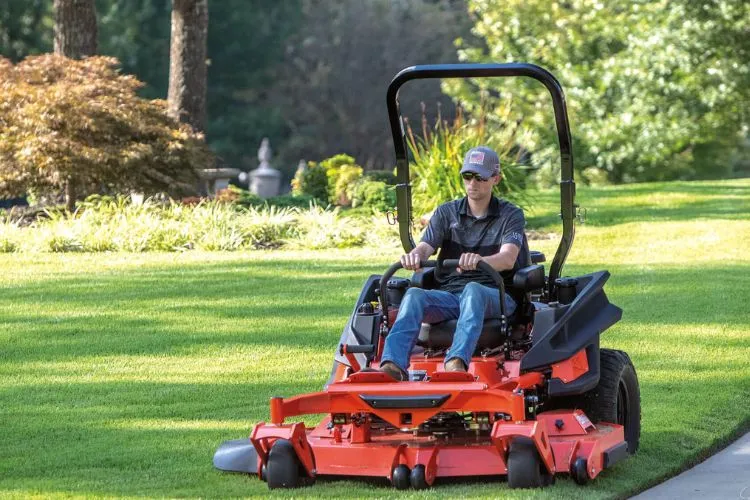
Table of Contents
Types of Lawn Mower Spindles
Navigating the world of lawn mower spindles can initially feel like wandering through a maze. There’s more variety than you might expect, each tailored for different needs and mowing environments.
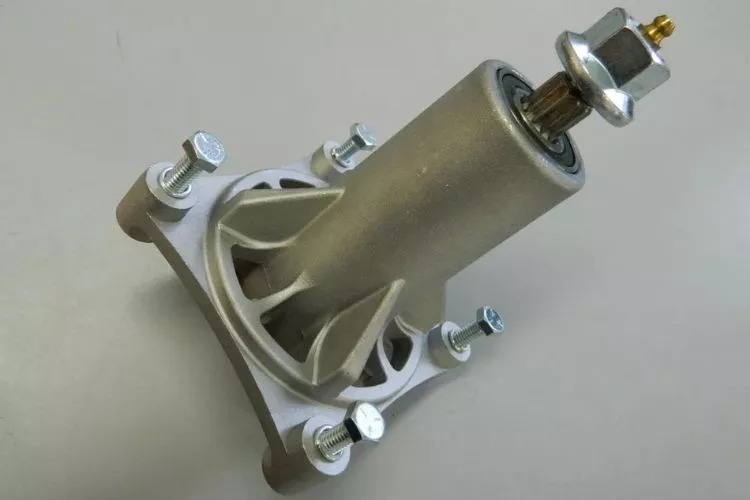
This section endeavors to be your compass, guiding you through the main types of spindles you’re likely to encounter.
Whether you’re a seasoned landscaper or someone just diving into the intricacies of lawn care, understanding these distinctions is crucial for optimal performance and longevity of your equipment. Let’s go!
Traditional Spindles
The cornerstone of many mowing machines, traditional spindles have been around for as long as lawnmowers themselves. They serve as the central point allowing blades to rotate seamlessly.
Design and Characteristics
Crafted primarily from heavy-duty metals, these spindles are simple in design, comprising of a shaft and housing. The top part typically has a pulley attached, which drives the blade using a belt. Their design is robust, aiming for endurance and minimal maintenance.
Common Applications
Traditional spindles are usually found in older mower models, residential mowers, and some commercial ones. Given their straightforward design, they’re often chosen for general-purpose mowing tasks – from backyard grooming to mowing larger plots that don’t demand specialized equipment.
Spindle Assemblies
Spindle assemblies are an evolution in the spindle design, providing an all-in-one solution, merging various components into a singular unit.
Definition and Components
Unlike the traditional spindles, an assembly includes the spindle, bearings, and sometimes the pulley in a pre-assembled package. These are often sealed, limiting external contaminants like dirt or moisture from hampering their performance.
Advantages and Disadvantages
Advantages
- Convenience: Being pre-assembled, these reduce the time taken for replacements.
- Protection: Sealed designs offer protection from external contaminants.
- Efficiency: Fewer moving parts often mean reduced wear and tear.
Disadvantages
- Cost: They can be more expensive initially than their traditional counterparts.
- Maintenance: Once a part of the assembly fails, often the entire unit needs replacement.
- Compatibility: Not all mower models might support the newer assembly designs.
Are All Lawn Mower Spindles the same or Interchangeable?
Ah, the age-old question of interchangeability. With a variety of spindles on the market, it’s natural to wonder if one can easily swap them out. Let’s delve deeper.
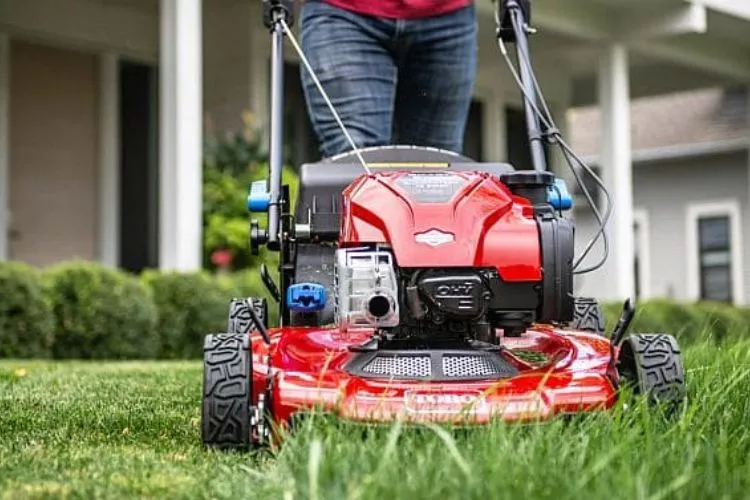
Compatibility Issues
Just as every shoe isn’t a fit for every foot, not every spindle is a match for every mower. Lawn mowers, especially across brands or models, often come with nuances in their design. This means a spindle designed for one model might not necessarily fit another.
Even minute differences in spindle size or design can lead to ineffective mowing or even potential damage. Furthermore, the drive system (whether belt-driven or otherwise) can determine compatibility.
Adapting Non-OEM Spindles
Non-OEM (Original Equipment Manufacturer) spindles can be tempting due to their often lower prices. While they promise compatibility with multiple mower models, it’s crucial to ensure they genuinely fit the intended mower.
Some folks might be tempted to make minor modifications or use adapters to make non-OEM spindles fit. However, this can introduce risks. An ill-fitting spindle, even if slightly, can lead to imbalanced mowing, faster wear, or even damage to the mower itself.
Pros and Cons of Interchangeability
Pros
- Cost Savings: Interchangeable spindles can be more cost-effective in the short run, especially non-OEM ones.
- Availability: Being able to use a range of spindles can be beneficial if a specific model’s spindle isn’t readily available.
Cons
- Potential Damage: Using a non-compatible spindle might lead to damage, which could cost more in repairs.
- Reduced Efficiency: Even if the mower operates with a different spindle, it might not operate at peak efficiency.
- Warranty Concerns: Using non-OEM or non-compatible parts can often void the mower’s warranty.
In the realm of lawn mower spindles, while flexibility seems appealing, it’s often best to tread with caution. Making sure parts are truly compatible can save a lot of headaches (and money) down the line.
You may also read: Are Lawn Mower Blades High Carbon Steel? | How to Improve Lawn Mower Suction
Key Components of Lawn Mower Spindles
When you peek under your lawn mower’s deck, it’s not just about blades whirring away. Anchoring those blades and ensuring they rotate efficiently are the spindles. These unsung heroes might seem straightforward, but they’re a culmination of several meticulously designed components working in harmony.
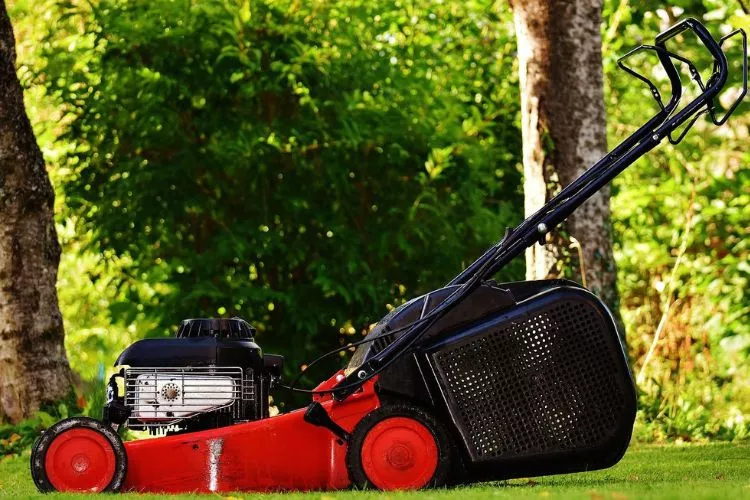
Let’s embark on a journey beneath the surface, breaking down the integral parts of the spindle and understanding their respective roles in ensuring your lawn looks impeccably manicured. After all, comprehending the intricacies of these components can be pivotal for maintenance, troubleshooting, and making informed decisions for replacements.
Bearings
Bearings are a cornerstone of any lawn mower spindle, ensuring the smooth and efficient rotation of the blade. Their presence minimizes friction, allowing for an unhindered blade movement even at high speeds.
Role in Spindle Functionality
Bearings are essentially responsible for supporting the blade’s rotational movement around the spindle. By reducing the friction between the moving parts, they not only contribute to a clean, consistent cut but also prolong the life of the spindle.
A well-lubricated and maintained bearing will ensure that the blades spin without resistance, reducing wear and tear on the mower’s motor and conserving energy. In simple terms, think of them as the “cushions” that prevent grinding and promote smooth sailing.
Types of Bearings
Lawn mower spindles typically employ two main types of bearings:
- Ball Bearings: These are the most common type found in lawn mowers. They utilize spherical balls to separate the bearing races, facilitating smooth blade rotation. They’re known for their durability and efficiency in high-speed applications.
- Roller Bearings: Less common in mowers, roller bearings use cylindrical rollers instead of balls. They’re designed to handle larger loads and are generally more robust, but they might not be as efficient at very high speeds as ball bearings.
Housings
The housing of a lawn mower spindle plays a pivotal role, providing a protective enclosure for the spindle’s core components. Beyond just acting as a protective shield, the housing ensures the proper alignment of the spindle, facilitating the optimal functioning of the bearings and shaft.
Material and Durability
The choice of material for spindle housings significantly influences its durability and, by extension, the overall lifespan of the spindle assembly. Common materials include:
- Cast Iron: Renowned for its sturdiness and ability to withstand regular wear and tear, cast iron housings are a preferred choice for heavy-duty mowers or mowers that see frequent use.
- Aluminum: Lighter than cast iron, aluminum housings offer a good balance between weight and strength. They are resistant to corrosion and are often found in mid-range mowers.
- Steel: Known for its toughness, steel housings are durable and can withstand harsh conditions. They might be prone to rust if not adequately cared for, so some models come with a protective coating to mitigate this.
Design Variations
Spindle housing designs can vary based on the mower’s intended use, manufacturer’s preference, and even aesthetic considerations. Some key design variations include:
- Ventilation Ports: Some housings come equipped with ventilation ports to prevent overheating, ensuring that the spindle remains cool during prolonged use.
- Integrated Grease Fittings: These designs make maintenance easier by providing an integrated point to lubricate the spindle’s bearings.
- Shape and Mounting Points: Depending on the mower’s deck design, the shape and mounting points of the housing can differ. Some might be more rounded, while others could have a flatter design.
Shafts
In the heart of every lawn mower spindle, you’ll find the shaft – a critical component responsible for connecting the blade to the rest of the mower assembly. Its strength and compatibility determine not only the mower’s performance but also its versatility in terms of blade attachment.
Materials and Strength
The durability and performance of a spindle shaft hinge predominantly on the material used and its build quality:
- Stainless Steel: Predominantly used in high-end and commercial-grade mowers, stainless steel shafts offer excellent resistance to corrosion and rust. They can withstand high stress and provide longevity, ensuring a prolonged lifespan of the spindle.
- Carbon Steel: Typically found in mid-range mowers, carbon steel provides a good balance between durability and cost. It’s robust enough for regular mowing, but it may need some protection against potential rusting.
- Alloy Steel: Combining the benefits of various metals, alloy steel shafts bring forth strength, resistance to wear and tear, and sometimes, a lighter weight. They are designed for durability and can handle varied mowing tasks.
Compatibility with Blade Attachments
Ensuring that your spindle shaft is compatible with different blade attachments is crucial. Here’s why:
- Versatility: A spindle shaft compatible with various blades lets you switch between mulching, bagging, or discharging with ease, allowing for a more versatile mowing experience.
- Performance: The right blade attachment ensures optimal grass cutting, leaving behind a neat and well-manicured lawn.
- Safety: Using incompatible blade attachments can lead to safety risks, including potential breakage during operation.
- Cost-Efficiency: A versatile spindle shaft might save you money in the long run. Instead of purchasing an entirely new mower, you can simply change the blade type to fit different mowing needs.
Factors to Consider When Choosing a Lawn Mower Spindle
Choosing the right spindle for your lawn mower can seem like a daunting task, given the plethora of options available. However, the spindle plays a pivotal role in ensuring the smooth operation of your mower and directly impacts its performance.
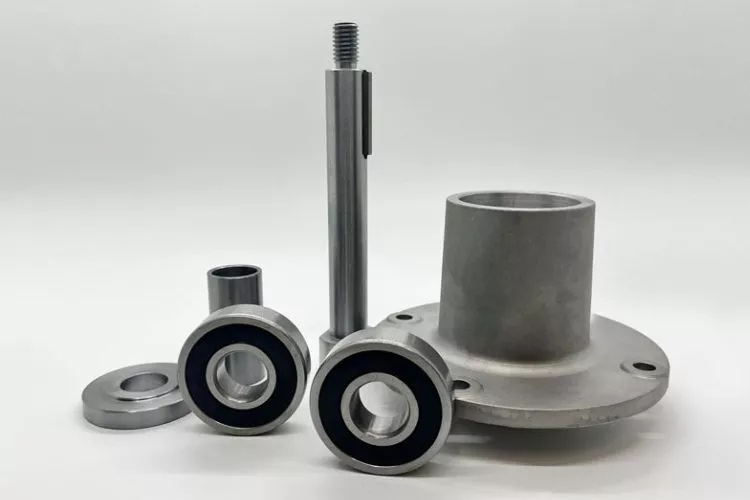
Thus, making an informed choice can mean the difference between an efficiently mowed lawn and a potentially damaged one. This section delves into the key considerations you should weigh before settling on a spindle.
From mower compatibility to durability and price points, we’ll guide you through the maze of choices to help you make the best decision for your lawn care needs.
Mower Type and Model
The specific type and model of your lawn mower significantly influence the spindle you’ll need. Not all spindles are designed to fit every mower, and here’s why:
- Push vs. Riding Mowers: A push mower typically has a simpler design, needing a spindle that’s straightforward in its function. On the other hand, riding mowers, with their intricate mechanisms and larger deck sizes, might require specialized or more robust spindles.
- Brand Variations: Just as with automobiles, different mower brands and models often have proprietary parts. A spindle designed for a John Deere might not be suitable for a Husqvarna. Always check your mower’s manual or consult the manufacturer’s recommendations before purchasing.
Blade Compatibility
The blade’s design and function should mesh seamlessly with the spindle, ensuring efficient cutting and reduced wear:
- Blade Mounting: Some spindles come with a star-shaped mounting pattern, while others might have a universal or Y-shape. It’s essential to match the spindle’s mounting design with that of your blade to ensure a secure fit.
- Rotation and Speed: The spindle’s rotation—whether clockwise or counter-clockwise—and its RPM (revolutions per minute) should align with the blade’s design specifications. A mismatch can lead to uneven cutting, increased wear, and potential safety hazards.
- Multiple Blades: If your mower deck uses multiple blades, it’s crucial to ensure that all spindles are uniform and compatible with each blade type. Disparities can lead to imbalances and uneven cuts.
Deck Size and Configuration
Deck size and configuration are pivotal when determining the right spindle. A larger deck, usually found on riding mowers, often requires multiple spindles to support multiple blades. Factors to consider include:
- Number of Spindles: As the deck size increases, more spindles may be required. For instance, a 48-inch (122 cm) deck might utilize three spindles, whereas a smaller 21-inch (53 cm) deck might only need one.
- Deck Shape: The configuration and curvature of the deck influence how spindles are positioned and how they interact with the blades and grass.
Durability and Maintenance
Durability should be at the forefront of your mind when selecting a spindle. A robust, well-made spindle ensures longevity and reduces frequent replacements.
- Material: Quality spindles are often crafted from high-grade steel or iron, which resist wear and handle the stress of spinning blades.
- Maintenance Needs: Some spindles are designed to be maintenance-free, while others might need regular lubrication. Considering the upkeep can save you time and potential headaches in the long run.
Price Range
Budgeting is essential, but it’s equally important to ensure you’re getting value for your money.
- Quality vs. Cost: While it might be tempting to opt for the cheapest spindle available, it’s crucial to balance cost with quality. A slightly more expensive, high-quality spindle might save you money in the long run by reducing replacements and potential repairs.
- Aftermarket vs. OEM: Original Equipment Manufacturer (OEM) spindles are designed specifically for particular mower models, ensuring a perfect fit. While they might come at a premium, aftermarket spindles, if chosen carefully, can provide similar quality at a potentially lower price point.
Pro Tips for Maintaining and Replacing Lawn Mower Spindles
Maintaining your lawn mower’s spindles is vital to ensuring a smooth operation and prolonging the life of your machine. Here are some expert tips to guide you.
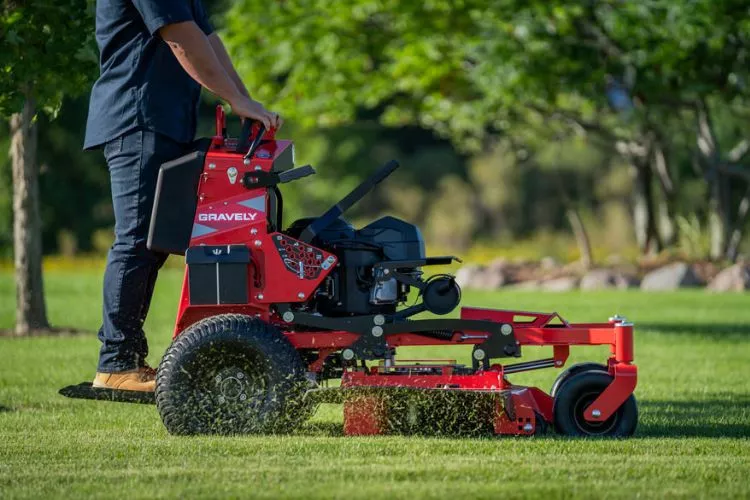
Regular Inspection and Cleaning
Dirt, grass clippings, and other debris can compromise spindle performance. Make it a habit to inspect and clean the spindles after each mowing session. Look for signs of wear or damage and ensure the spindles rotate freely without any hindrance.
Proper Lubrication Techniques
Using a high-quality grease, lubricate the spindle bearings regularly. Apply grease until it slightly oozes out, ensuring full coverage. Remember, over-lubrication can attract more dirt, so use it sparingly.
Choosing the Right Replacement Spindle
When it’s time for a replacement, consider your mower’s specifications. Whether you opt for an OEM or aftermarket spindle, ensure it’s compatible with your mower’s model. Quality and reviews should guide your decision.
DIY vs. Professional Replacement
If you’re handy and familiar with mower mechanics, a DIY replacement can save money. However, for those less experienced, hiring a professional ensures correct installation, avoiding potential damages or inefficiencies down the road.
Frequently Asked Questions (fAQs)
Can I replace my lawn mower spindle with a different brand?
Yes, but ensure it’s compatible with your mower’s model and specifications. Always check fitment before purchasing.
What are the signs that my spindle needs replacement?
Unusual noises, reduced cutting efficiency, wobbling, or visible wear indicate spindle replacement.
Are aftermarket spindles as good as OEM spindles?
Quality varies. Some aftermarket spindles match OEM quality, but research and reviews are essential.
How often should I lubricate the spindle bearings?
Lubricate every 25-50 hours of use, but consult your mower’s manual for specific recommendations.
Are spindle assemblies more durable than traditional spindles?
It depends on the material and design. Quality spindle assemblies can offer similar durability to traditional spindles.
Conclusion
In wrapping up, understanding your lawn mower’s spindle is paramount to achieving that impeccable cut. From the diverse spindle types to the significance of each component, it’s evident that choices matter. The right spindle not only guarantees efficient mowing but also prolongs the equipment’s lifespan.
And while some spindles might seem interchangeable, it’s vital to prioritize compatibility and quality above all. We hope that this guide has been helpful if you were wondering are all lawn mower spindles the same or not. You can read about similar topics here on our website. Check back again soon for more.

